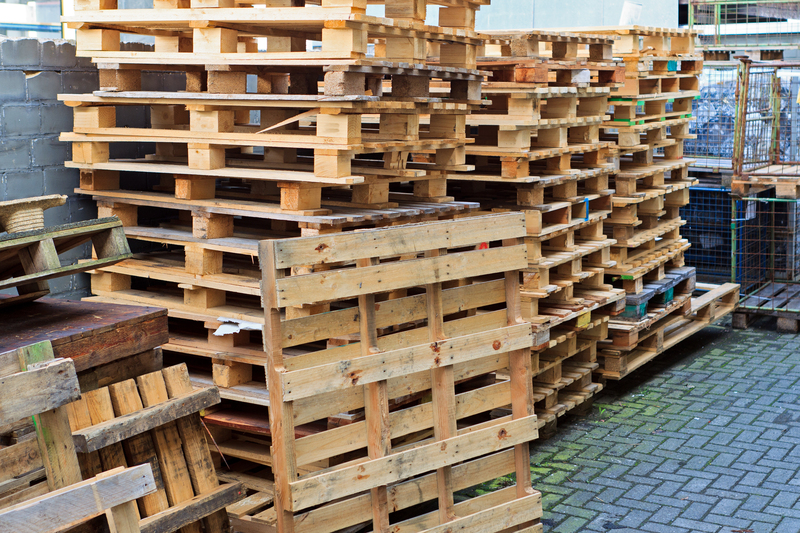The Right Approach to Discarding PPE Without Harming the Environment
The surge in Personal Protective Equipment (PPE) usage due to global health crises has spotlighted a new environmental challenge -- the safe and eco-conscious disposal of PPE. Whether at hospitals, workplaces, or households, the need to use items like masks, gloves, and face shields has become routine. But after serving their purpose, what happens to this protective gear? Offering an environmentally responsible solution for discarding PPE is crucial in our shared effort to minimize pollution and keep both people and the planet safe.
Understanding PPE: Types and Environmental Impact
- Masks: Disposable surgical masks, N95 respirators, and cloth masks.
- Gloves: Latex, nitrile, or vinyl materials, mostly single-use.
- Face shields & Goggles: Often formed from plastics, either single-use or reusable with proper sanitization.
- Gowns and Aprons: Made from polymers like polypropylene and polyethylene; mostly single-use in healthcare.
PPE waste poses an acute threat because most of these items are made from plastics that take centuries to degrade. _Improper disposal leads to landfill overflow, air pollution from incineration, and microplastic contamination of terrestrial and aquatic systems._ Worse still, discarded PPE can potentially become vectors of infection if not handled responsibly.
Why Proper PPE Disposal Matters
The environmental footprint of PPE waste extends beyond the physical litter -- it raises issues of public health and ecosystem stability. Here's why eco-friendly disposal of PPE is urgent:
- Prevents Microplastic Pollution: Disposable PPE is composed of various plastic polymers that can break down into microplastics, infiltrating soils and waterways.
- Reduces Animal Hazards: Animals can ingest discarded PPE or become entangled, leading to injuries or death.
- Controls Disease Transmission: Used PPE may carry infectious agents; when improperly thrown out, it risks spreading pathogens.
- Protects Sanitation Workers: Correct disposal shields waste handlers from unnecessary exposure to hazardous materials.

Principles of Environmentally-Safe PPE Disposal
To practice the right way to discard PPE without harming the environment, it's essential to adhere to these sustainable principles:
- Reduce: Use only as much PPE as necessary, and switch to reusable options where possible.
- Segregate: Always separate PPE waste from recyclables and regular trash.
- Contain: Dispose of used items in leak-proof, appropriately labeled containers or bags.
- Treat: Apply disinfection protocols before discarding potentially contaminated PPE.
- Recycle and Recover: Seek out recycling programs or innovative technologies that reclaim or repurpose PPE waste.
A Step-by-Step Guide: Discarding PPE the Right Way
Here's a comprehensive approach for individuals, businesses, and communities to discard personal protective equipment in an environmentally responsible manner:
1. Assess and Minimize Consumption
Start by asking if the PPE is truly necessary for your activity. For tasks with low exposure risks, opt for reusable gear (e.g., cloth masks that can be washed) instead of single-use items. This simple shift can decrease PPE disposal needs drastically.
2. Safe Removal and Containment
- Remove PPE carefully, touching only the straps or edges to avoid contamination.
- Place used PPE items directly into a lined waste bin. For medical or high-risk PPE, use a separate, closed container marked as hazardous.
- Do not discard PPE in public spaces, parks, or household recycling bins.
3. Disinfection Protocols
If feasible, lightly spraying used PPE with an approved disinfectant before disposal can reduce the risk of infection for waste handlers. Avoid panicking about minor contamination; routine gloves and masks used for everyday tasks rarely pose a significant biohazard if proper hygiene is maintained.
4. Segregation of PPE Waste at Source
Segregating PPE waste at the point of disposal is essential for both public health and the environment. Mixing single-use masks or gloves with household recyclables can contaminate recycling streams, making materials non-recoverable.
- Use color-coded bags or bins: Yellow or red bags are often designated for biowaste or potentially infectious waste in healthcare settings.
- Label bins clearly: Signage prevents accidental mixing and informs all users about correct disposal procedures.
5. Local Waste Management Compliance
Check with your municipal authority for specific guidance on how to dispose of PPE waste. Many regions are updating regulations to accommodate the new surge in used personal protective items, including dedicated collection points or centralized drop-off locations.
6. Explore PPE Recycling & Repurposing Programs
While traditional recycling facilities typically cannot process PPE because of contamination risks and material composition, innovative PPE recycling solutions are emerging.
- Specialized firms are piloting programs to collect and melt down certain PPE plastics (like polypropylene masks) into construction materials or fuel.
- Some companies offer PPE take-back schemes for offices and healthcare facilities, ensuring all items are processed safely.
Always research and support local or certified programs if they are available in your area.
PPE Waste Management in Different Settings
Hospitals and Healthcare Facilities
- Strict protocols mandate autoclaving or incineration to destroy potential pathogens.
- Color-coded segregation of PPE waste reduces risk and enables tracking.
- Some facilities are exploring onsite PPE decontamination and plastic processing for recovery.
Workplaces and Businesses
- Set up clearly marked bins around entryways, break rooms, and exits.
- Educate staff about correct disposal protocols and the reasons behind them.
- Consider collaborating with third-party PPE waste collection and recycling companies.
Households
- Bag used masks and gloves separately; tie the bag securely before placing it in your regular trash (not recycling).
- Never flush PPE down the toilet -- this causes sewer blockages and waterway pollution!
- Wash hands thoroughly after handling used PPE for disposal.
Innovative Approaches to Eco-Friendly PPE Disposal
Researchers, NGOs, and businesses worldwide are working to develop sustainable alternatives and smart PPE disposal methods that minimize environmental harm. Here are some promising approaches:
- Biodegradable PPE: Some manufacturers are producing face masks and gloves made from plant-based or compostable materials, which break down more rapidly. Look out for certified compostable PPE and ensure it is disposed of in industrial composting where available.
- PPE Upcycling: Projects in several countries are investigating the reuse of cleaned and sterilized PPE plastics in road construction, park benches, or as building materials.
- Thermal Conversion Technologies: Processes such as pyrolysis can safely convert used PPE into fuels, reducing the volume of waste and creating useful by-products.
- Community Collection Initiatives: Grassroots efforts encourage people to return used PPE to dedicated boxes at supermarkets, pharmacies, and transit hubs for managed disposal.
What Individuals Can Do: Tips for Reducing PPE Pollution
You don't need to wait for big policy changes to make a difference! Here's how you can contribute to a cleaner environment through better PPE disposal:
- Switch to reusable masks and gloves whenever practical -- proper cleaning extends their life and keeps waste down.
- Never throw PPE on the street, in parks, or natural spaces -- always use a sealed bin.
- Share knowledge and encourage friends and family to follow safe disposal practices.
- Support or start local PPE collection and recycling drives in your community.
- Advocate for improved infrastructure and clear disposal guidelines from local authorities.
Common Mistakes to Avoid When Discarding PPE
Even well-meaning individuals and organizations often make errors that inadvertently contribute to PPE pollution:
- Placing soiled masks and gloves in recycling bins -- this contaminates recyclables and endangers workers.
- Burning PPE at home -- open burning releases toxins and contributes to localized air pollution.
- Flushing PPE down toilets or drains -- this disrupts sewage systems and leads to marine pollution.
- Leaving PPE in open trash or overflowing bins -- strong winds or rain can carry these items into the environment.

The Future of Eco-Friendly PPE Disposal
As awareness grows, policymakers are under increasing pressure to update waste management systems, incentivize innovation, and tackle the mounting tide of PPE waste. Several governments have begun to:
- Mandate clear labeling and instructions for PPE disposal.
- Invest in research on recycling technologies and biodegradable PPE materials.
- Launch public education campaigns to spotlight correct disposal practices.
But making eco-friendly PPE disposal the new norm requires a joint effort across society -- from manufacturers and healthcare workers to individual consumers.
Conclusion: Your Impact in Discarding PPE Responsibly
By choosing the right approach to discarding PPE materials without harming the environment, each of us can reduce pollution, safeguard public health, and support a more sustainable future. Remember: reduce when you can, segregate always, and advocate for better solutions whenever possible.
Adopting informed practices, supporting recycling initiatives, and investing in biodegradable alternatives will curb the negative impacts of PPE. Let us all commit to discarding our protective gear wisely--because protecting ourselves should not come at the cost of harming our planet.